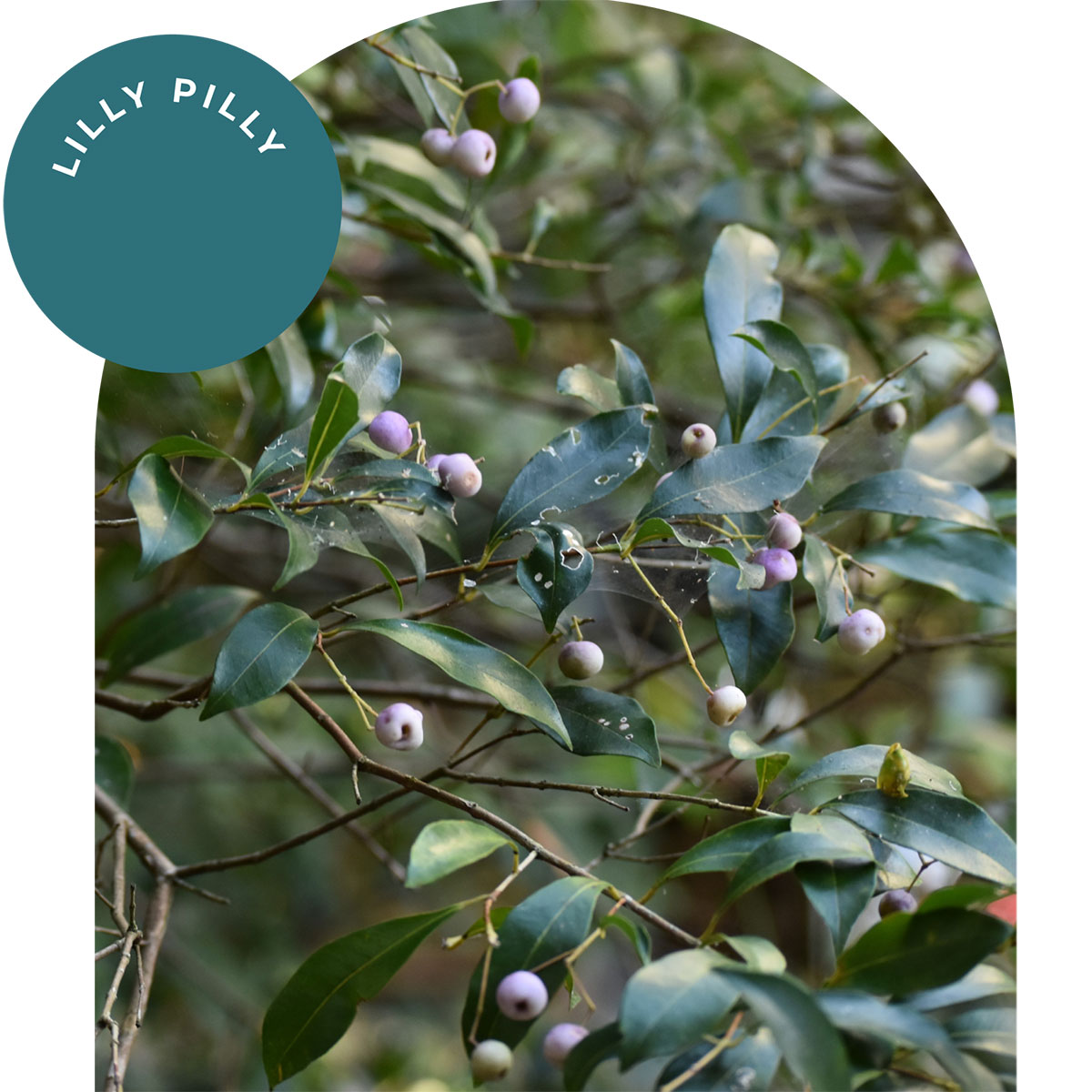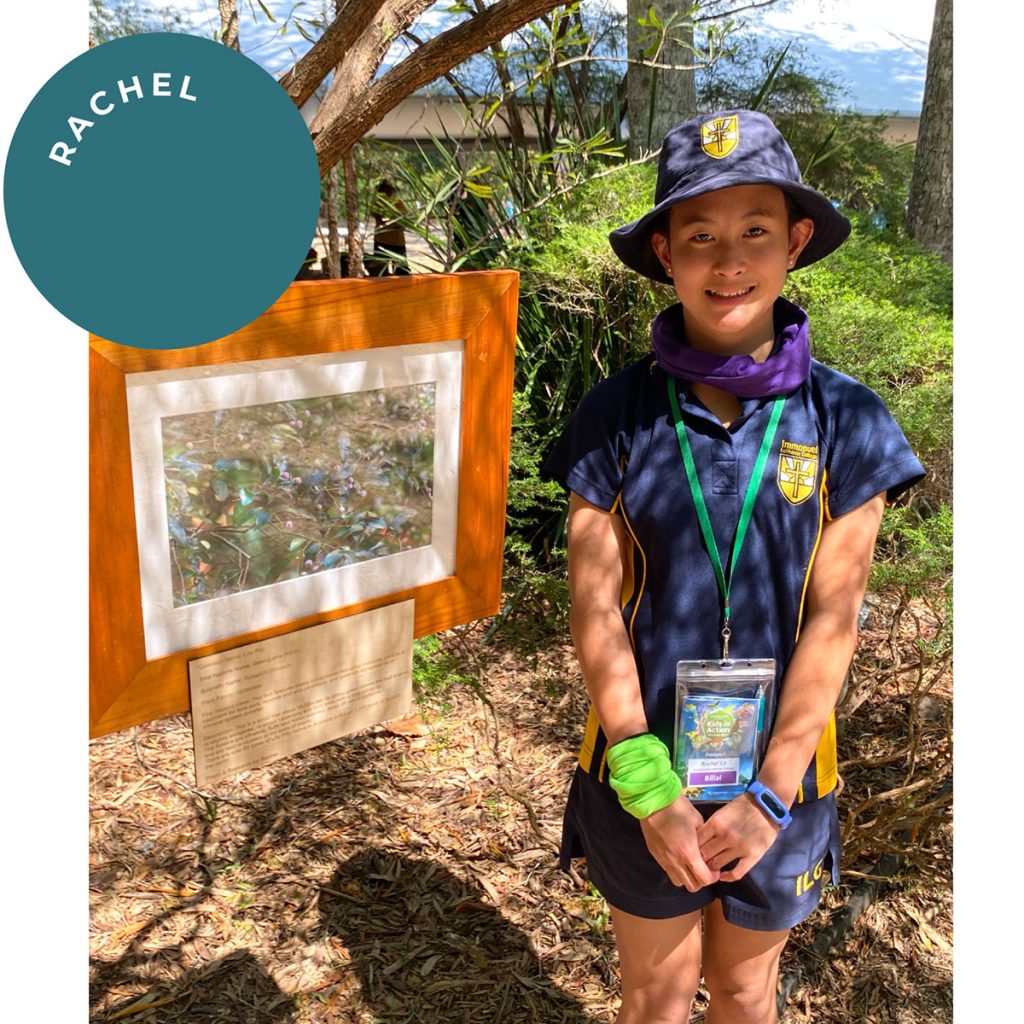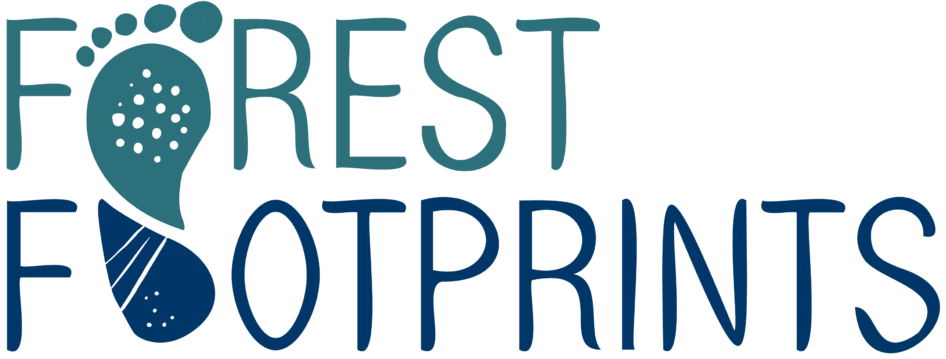Lilly Pilly
Syzygilum Oleosum
Common Name:
Lilly Pilly
First Nations Name:
Galang-arra (NSW)
Scientific Name:
Syzygium Oleosum
Height:
10-15m tall
Bark:
Bark rough, prickly with protruding fibres, with horizontal ridges from leaf scars, and vertical fissures.
Leaves:
Its glossy green leaves are oval-shaped or slightly elongated, to about 12cm long and 4cm wide, with a long pointy tip.
Flowers:
The flowers are off-white, fluffy and honey-scented, about 25 mm in diameter, and are held in clusters at the ends of stems.
Fruit:
Edible blue-purple berries that are 10–25mm in diameter. They are crunchy and light with a mild sweetness.
First Nations Uses:
This fruit features widely in traditional Aboriginal medicine, used as a treatment for sore ears, wounds and skin conditions, and generally consumed as an immune system booster.


Geographical location:
Native to East coast rainforests and wet sclerophyll forests from north Queensland to southern New South Wales.
Conservation status:
Not considered at risk

Interesting fact:
There are over 60 types of Lilly Pilly native to Australia and over 1,200 types all around the world.
